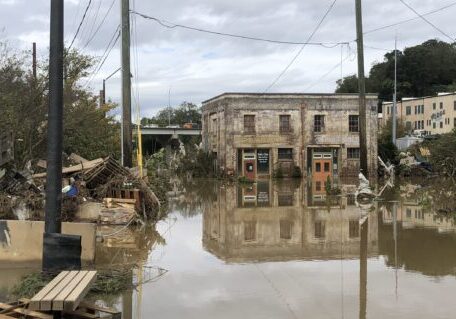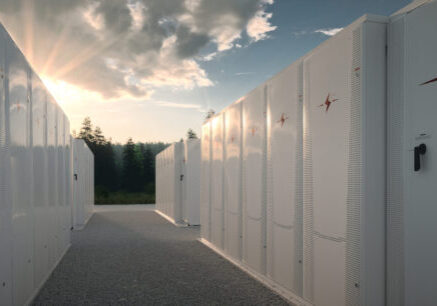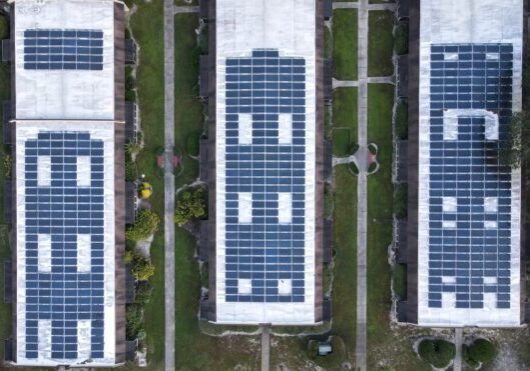December 13, 2017
Massachusetts Announces More Energy Storage Grants
By Todd Olinsky-Paul
Last week, the Baker-Polito Administration awarded $20 million in grants to support 26 energy storage projects in 25 Massachusetts communities. The grant program, Advancing Commonwealth Energy Storage (ACES), is part of the state’s ongoing Energy Storage Initiative, which includes a range of energy storage policy efforts. It puts the state clearly in the storage leadership role in the East.
Originally intended to be a $10 million investment, the ACES budget was doubled based on the strength and number of submitted proposals. The projects awarded funding under the program represent a total of 32 MW and 85 MWh of energy storage capacity – a big step forward for a state that currently has about 4 MW and 7 MWh of advanced energy storage installed. It will also leverage $32 million in matching investments from grantees. The new grants, which support a wide range of utility and behind-the-meter projects, are designed to demonstrate the value of services that battery storage can provide that are not yet monetizable. They should benefit a broad spectrum of rate payers, from hospitals, farms and research labs to schools and residences.
Importantly, the ACES grantee list includes funding for the first energy storage applications in hospitals on the East coast that we know about. In the coming months, Clean Energy Group (CEG) will work with one of these hospitals to produce a case study that could be useful in planning similar projects at other hospitals and medical centers in the region and nationally.
Also noteworthy on the list of awardees are five municipal utility projects. These will build upon the work that CEG, the Clean Energy States Alliance, Sandia National Laboratories and US Department of Energy – Office of Electricity have done to support the Sterling Municipal Light Department energy storage project, the state’s first utility-scale energy storage system and an awardee under the Community Clean Energy Resiliency Initiative (CCERI). Municipal utilities are important first adopters of energy storage, which they can use to reduce costs to their ratepayers and provide greater community resiliency in the event of power outages. The number of municipal utilities that sought and received grants under the ACES program is testament to the impact the Sterling economic case, which is among the best energy storage economic cases to date, has had on the state’s other municipal light plants.
All told, the $20 million ACES grants are good news. Along with the $40 million CCERI grants and a $4.5 million program of grants for peak demand reduction, they represent a significant investment on the part of Massachusetts to ensure that energy storage, a transformational clean energy technology, is visibly deployed and develops an operational track record in the state.
Having achieved this, the state should now turn to market building. As CEG President Lew Milford pointed out in the Boston Globe article on Dec. 8th, it is important that the state start to move beyond one-off energy storage demonstration projects and focus instead on addressing market inefficiencies, which have so far prevented widespread uptake of batteries behind customer meters. The state’s investor-owned utility customers, many of who have some of the highest electric and demand charge rates in the country, could benefit from battery storage technologies if the market conditions were improved.
With NREL, CEG has published a report showing that over 50,000 commercial customers in Massachusetts could economically install energy storage today to reduce demand charges. This is a huge market that needs more state support to capture, and the ACES grantee list shows that the state has an interest in supporting it. A program of targeted incentives, for example, could help bring the behind-the-meter commercial market for battery storage to scale in Massachusetts.
Beyond providing customer energy cost relief and grid-wide system benefits, a booming behind-the-meter market could bring real jobs and economic development to Massachusetts. According to GTM Market Research, “the U.S. storage market will grow almost 9x between 2017 and 2022; the annual market will nearly cross the 1 GW annual deployment threshold in 2019 as procurement programs and improved economics come to the fore, and behind-the-meter deployments (residential plus non-residential) will make up half the annual market by 2021.”
Thus far, Massachusetts has at least begun work on each of the numerous policy recommendations from its State of Charge energy storage report, except one: a customer storage rebate program. Now that the ACES grants have been awarded – and with the peak demand and third round CCERI grants soon to be announced – Massachusetts should turn its attention to consumer rebates. The groundwork has been laid; an immense new market awaits.
This blog post was also published in Renewable Energy World.














